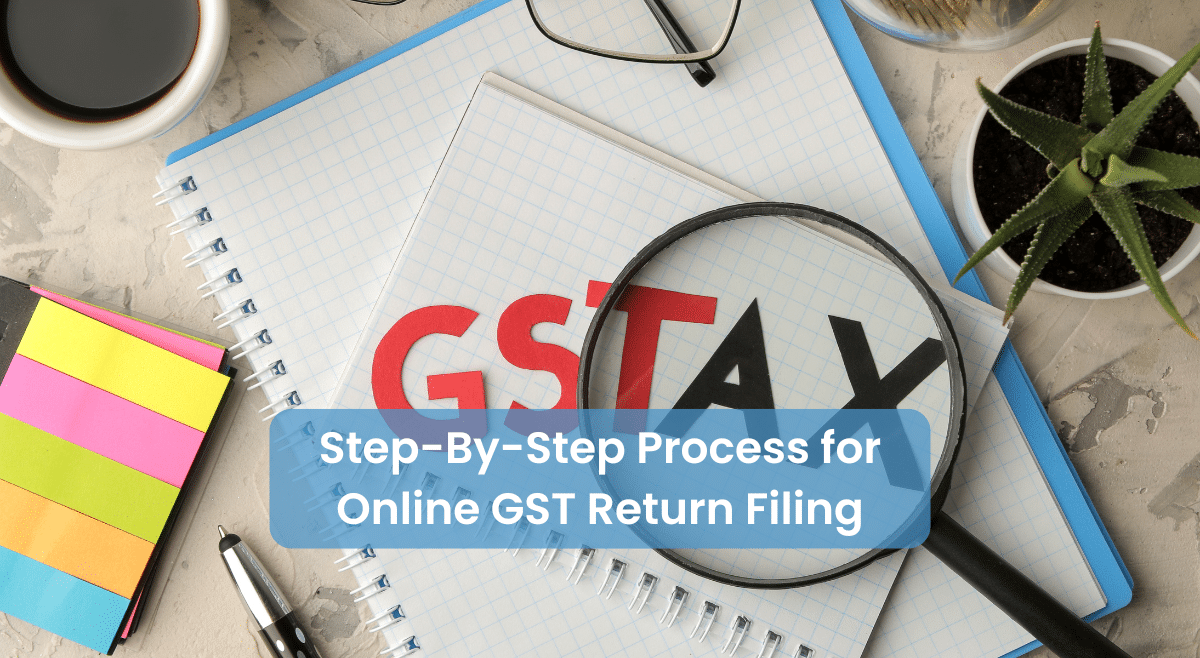In the realm of taxation, Goods and Services Tax (GST) has revolutionized the way businesses manage their indirect taxes. Since regular return filing encourages accountability and openness in the tax system, it is essential to GST compliance. The GST Return Filing Procedure is made simpler for taxpayers by filing their GST returns online, which is convenient and efficient.
What is GST Return Filing?
The GST return filing is the process by which registered taxpayers report their sales, purchases, and tax payments to the government. It’s meant to reconcile the tax liability and input tax credit claims of businesses.
Why is GST Return Filing Important?
According to section 59 of the CGST Act, 2017, emphasizes the importance of self-assessment for taxpayers. When accurately assessing and reporting their tax dues through periodic tax returns, registered persons fulfill their obligations and contribute to the smooth operation of the GST system in India.
Understanding the Importance of Online GST Return Filing
For businesses to adhere to tax laws and perform their responsibilities under the Goods and Services Tax (GST) system, online GST return filing is essential. There are several key reasons why online filing is essential:
- Convenience
- Efficiency
- Real-time Tracking
- Faster Processing
- Transparency
- Accessibility
Preparing for Online GST Return Filing
Before initiating the online filing process, it’s essential to gather all necessary information and ensure compliance with GST regulations. This includes details such as sales and purchase invoices, input tax credit availed, and tax payments made during the tax period.
How to Register Online GST Return Filing?
1. Register for GST IN
Begin by registering for a Goods and Services Tax Identification Number (GSTIN) if you haven’t already. This can be done through the official GST portal by providing the necessary details about your business.
2. Log in to the GST Portal:
Once you have your GSTIN, log in to the GST portal using your credentials. This will give you access to the various services and features available on the portal.
3. Navigate to the Returns Dashboard:
After logging in, navigate to the ‘Returns Dashboard’ section on the portal. This dashboard is where you’ll find all the options related to GST filing and compliance.
4. Prepare Online:
Select the option to prepare your GST return online. This will prompt you to choose the appropriate return form based on your business type and the tax period for which you’re filing the return.
5. Enter Details:
Fill out the selected return form with the relevant details about your business activities, including outward and inward supplies, input tax credit, and any other required information. Ensure accuracy and completeness in entering these details.
6. Check Submission Status:
After entering all the necessary details, review the form carefully to ensure accuracy and completeness. Once satisfied, submit the form electronically through the portal. You’ll receive a confirmation message along with a unique acknowledgment number.
7. Tax Payment:
Depending on your tax liability, you may need to make a payment towards your GST liability. Use the portal’s payment gateway to make the payment securely online using the available payment options.
8. Offset Liability:
If you have any input tax credit available, you can offset it against your tax liability during the filing process. The portal will automatically calculate the net tax payable after considering the available credit.
Conclusion
The online GST return filing offers convenience, it may pose challenges such as technical glitches, data entry errors, and understanding complex tax regulations. To overcome these challenges, stay updated with GST updates, seek professional assistance of CA if needed, and utilize the resources available on the GST portal.

